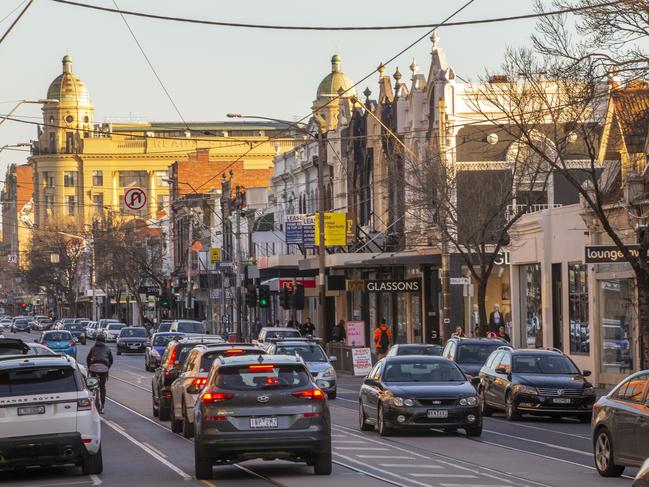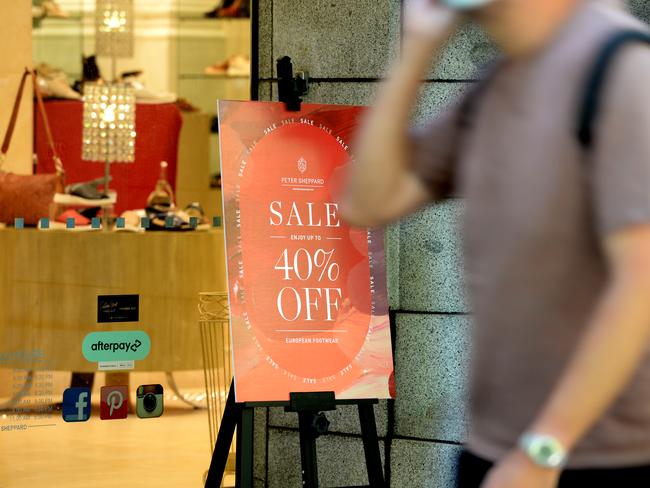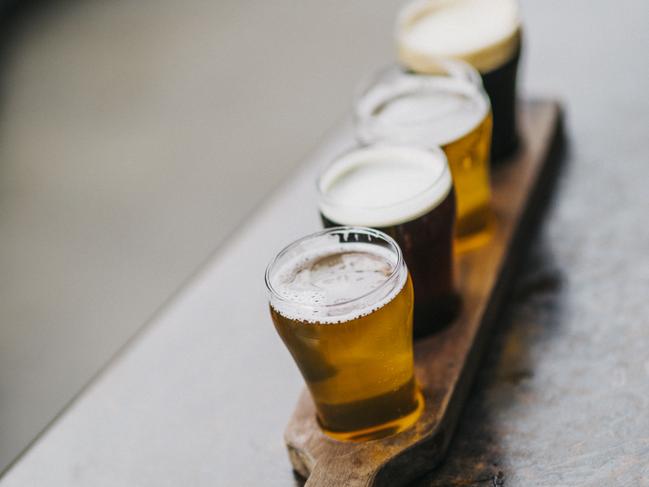State of decline: ‘Retail recession’ looms as Vic falls to rock bottom
There could be two more years of Victorian retail outlets, eateries builders and other businesses going broke, as the state continues its decline to rock bottom — leading to a grim “recession” warning from one sector.
Victoria
Don't miss out on the headlines from Victoria. Followed categories will be added to My News.
Victorian shops, restaurants, builders, brewers and other businesses could continue to bleed and go broke for another two years, as the state continues its post-pandemic slide — with an industry leader warning a “retail recession” now looms.
Even after interest rates dropped “a couple of times”, it would likely take more than a year for consumer confidence to return to a point where Victorians feel comfortable splashing out again on pleasures like restaurant meals and new clothes, Swinburne’s Professor Sean Sands said.
“People can’t afford to spend as much as they have in the past, so they’re not eating out as much, they’re not buying as much. So whether it be retailers or restaurants and cafes, bars, whatever, there’s a smaller share of the pie to take in terms of income … and that means some operators are having to close up shop,” the head of marketing and management at Swinburne’s School of Business, Law and Entrepreneurship said.

Interest rate rises, expensive rents and high staff wages had all added to the cost of doing business post-pandemic in Victoria, “putting pressure on stores”, he said.
When this was combined with consumers being hit hard with cost of living pressures that forced them to reduce their discretionary spending, it created “a perfect storm where those two worlds are not aligning”, Prof Sands said.
“How long is this problem going to go for? There’s talk about interest rate reductions late this year or next year and that should have some impact, but it’s not going to be immediate, there’s going to be a lag of maybe 12 months,” he said.
“Looking at it over the last four years, we’ve had all these interest rate rises and we’ve had Covid … people had a lot more money four-years-ago.”
Victorian Chamber of Commerce and Industry chief Paul Guerra said the current, challenging economic conditions were expected “to persist for at least the remainder of the calendar year”, as cost-of-living pressures continued to bite.
“Households have less discretionary spend, interest repayments are up, petrol prices are more expensive, as are groceries. As a result, businesses are being impacted. We will see an improvement when consumer confidence returns and interest rates drop,” he said.
“All this, while business costs have also gone up … businesses are extremely concerned about tax and regulation, labour and skills shortages and energy security and price.”
Mr Guerra said governments at all levels needed to act immediately and “pull every lever they have available” to help Victorian businesses survive — including reducing tax.
Melbourne had the longest Covid lockdowns and among the harshest pandemic restrictions in the world under former Premier, Dan Andrews, that saw restaurants and retailers forced to close their doors for extended periods and defer payments, which are now due for many.
Figures released by the Australian Retailers Association (ARA) on Tuesday reveal Victoria has had the weakest improvement in retail sales over the past year of all Australian states, growing just 0.6 per cent between April 2023 and April 2024.


ARA chief Paul Zahra said, nationally, most discretionary retail categories remained in decline, with household goods recording a fifth consecutive month of sales decline and clothing, footwear and accessories, and department stores all down, year-on-year — which suggested “a retail recession could be on the horizon”.
Only the category of ‘other retailing’ had performed well, but that was courtesy of beauty products being included, which were typically the last market sector to be affected by economic downturns, Mr Zahra said.
“Department stores, household goods and clothing, footwear and accessories remained in decline across both March and April, which is a worrying sign for retailers,” he said.
“Household goods have suffered significantly. The category recorded once-off sales growth in
November during the Black Friday sales — but has otherwise remained in decline for more than 12 months.
“The ongoing cost of living pressures, interest rate ramifications and increased cost of doing
business make it a very challenging period for those in the discretionary retail sector, particularly for SMBs (small to medium sized businesses).”
Analysis of Australian Bureau of Statistics data by the Institute of Public Affairs shows more than 3000 businesses have packed up and left Victoria since the end of Covid lockdowns in 2021.

The research reveals Victoria experienced the largest net flow of businesses of any state, with 3085 moving interstate between January 2022 and March 2024.
At the same time, Queensland welcomed 4276 new businesses while Western Australia saw an increase of 1048 and South Australia enjoyed 745 more.
The figures also show Victoria’s growth rate of new businesses was the lowest in the nation, at 6.3 per cent — or an increase of 43,143 companies between March 2022 and the end of March this year.
New South Wales, in comparison, had a growth rate of 7.4 per cent, with 61,053 more businesses opening up in the same time frame.
It comes as a growing number of Victorian businesses — from breweries to top restaurants and previously thriving retailers — close their doors, go into administration or make radical changes and cutbacks.
Last week the Herald Sun revealed even the once booming beer manufacturing industry was now battling and going bust.

Industry sources say that for every collapsed craft brewer that has hit the headlines over the past year — and there have been many — there are scores barely holding on.
Amid a plea for Australians to get on the craft beers to help save the struggling sector, Independent Brewers Association chief Kylie Lethbridge said “many, many” craft breweries were now on their knees.
“They’re either restructuring — and in fact many already have, some as long as 12 months ago — reduced their staff down to bare bones, been put up for sale or simply closed their doors,” Ms Lethbridge said.
Tax debts deferred during the pandemic that now had to be repaid, a rapid 40 to 50 per cent rise in the cost of beer making ingredients and the skyrocketing cost of gas — “which is a big part of the brewing process” — had combined to create “a veritable perfect storm” of conditions which made staying afloat in a cash-strapped society increasingly difficult, she said.




